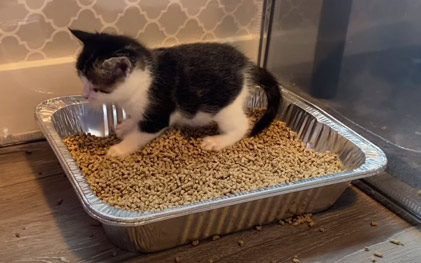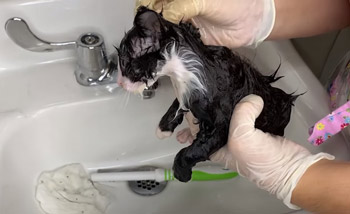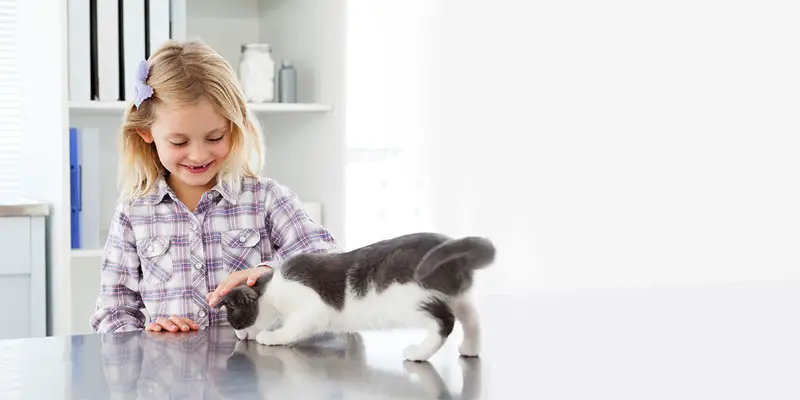Getting a new kitten is a great joy, but you have to know some basic things of taking care of a newborn kitten. A kitten is very cute, soft, and cuddly after getting birth. A new kitten is one of the best things in the world if you are a deep lover of them.
Taking care of a kitten or brand-new fur baby is also a great responsibility. After birth, the first four-month is very important for taking care. You have to consider many things such as feeding, grooming and litter box use, etc.
How to Take Care of Kitten: From Birth To a Year Old
Here I discuss 13 starter tips for you to make your kitten happy and healthy:
How to Choose the Right Bedding for a Kitten
The best bedding for a kitten is a soft, comfortable material that is easy to clean. A good bedding option for a kitten is a washable, hypoallergenic material such as fleece or microfiber.
Kittens are also attracted to materials that have a strong scent, so consider using bedding that has a built-in scent or that can be sprayed with a cat-friendly scent.
How to Feed Newborn Kitten
Kittens need to be fed every two to three hours and should not go more than four hours without food. They need their mother’s milk because it is packed with nutrients and antibodies that help them grow and stay healthy.
If mother milk is not available for any reason, you can purchase kitten formula from a pet store. Kittens should be fed with a syringe or an eyedropper.
Fill the syringe or eyedropper with formula and place the tip into the kitten’s mouth. Gently squeeze the formula into the kitten’s mouth. Do not force the kitten to swallow.
Kittens should be fed until their bellies are round and full. You can follow this kitten feeding chart and guidelines.
Training Your Kitten to Use the Litter Box
You will need to provide your kitten with a litter box, some litter, and a place to scratch. It is best to put the litter box in a quiet place where your kitten can feel comfortable. You will also need to show your kitten how to use the litter box.

The first step is to choose the right litter box for your kitten. It should be big enough for your kitten to move around in and it should have high sides so that your kitten does not accidentally fall out.
You should also choose a litter that is soft and comfortable for your kitten.
The next step is to fill the litter box with litter. You should put enough litter in the box so that it is about two inches deep. You should also put some litter in the bottom of the box so that your kitten can scratch it.
The next step is now to give her live training to use the litter box. You should put your kitten in the litter box and let it walk around for a few minutes. You should then put your hand in the litter and show your kitten how to scratch. Do the same for a few days, and it will learn automatically.
How to Grooming a Kitten
Grooming is a very important part of taking care of a Kitten. If you are planning on showing your kitten, or if you just want her to look her best, you will need to know how to groom her properly.
Many people think that all they need to do is give their kitten a bath, but there is actually a lot more to it than that.

First, you will need to purchase a quality kitten shampoo and conditioner specifically designed for kittens. Never use human shampoo on your kitten, as it can be too harsh and strip away her natural oils.
When you are ready to give your kitten a bath, make sure the water is not too hot or too cold. Fill the sink or tub with a few inches of lukewarm water, and then place your kitten in it.
Gently massage the shampoo into her fur, being careful not to get any in her eyes. Rinse her off thoroughly, and then apply the conditioner. Rinse the conditioner out completely, and then wrap your kitten in a towel and rub her dry.
Once she is completely dry, you can start grooming her. Use a wide-toothed comb to remove any knots or tangles from her fur. Start at the bottom of her coat and work your way up. Be gentle, as her skin is very delicate.
You will need to pay special attention to her ears. Gently clean them with a cotton ball soaked in kitten-safe ear cleaner. Never use cotton swabs in her ears, as this could damage her delicate ear canal.
Once you are finished grooming your kitten, give her a treat and lots of love. She will look and feel great, and she will be ready to show off her beautiful coat.
Desexing Kitten
Should I Desex my kitten or not? Some people choose to desex their kittens for behavioral reasons, while others do it for health reasons. Ultimately, the kitten desexing decision is up to you.
If you are considering desexing your kitten, you may want to speak with your veterinarian about the benefits and risks. They can help you make an informed decision. For desexing, a kitten should reach sexual maturity at 12-16 weeks or 3-4 months.
Kitten Vaccination
When should a kitten be vaccinated? and What type of vaccine is needed for kittens?
Actually, a kitten should be vaccinated at 8 weeks old. What type of vaccine is needed for a kitten will vary depending on the kitten’s age, health, and risk of exposure to disease.
However, most kittens will need to be vaccinated against common diseases such as feline panleukopenia, feline herpesvirus, and feline calicivirus.
Pet Insurance
Do I need Pet Insurance for my kitten? Some pet parents feel that insurance is a worthwhile investment, while others do not. Ultimately, the decision of whether or not to purchase pet insurance is up to the individual pet owner.
First Visit To The Vet
You should take a kitten to the vet as soon as possible after adopting it, and then again at around 4-6 weeks of age, 8-10 weeks of age, and 12 weeks of age. After that, you should take your kitten to the vet at least once a year.
Microchipping
Should I get my kitten microchipped? Yes, you should get your kitten microchipped as soon as possible.
What age is best to microchip a kitten? Most veterinarians recommend microchipping kittens at around 8 weeks of age.
Does microchipping a kitten hurt? It is a very quick and relatively painless procedure for the kitten. A microchip is about the size of a grain of rice and is inserted under the skin between the shoulder blades.
What are the side effects of microchipping a kitten? There are no known side effects of microchipping a cat or kitten.
Wellness
A kitten wellness exam is a physical examination performed by a veterinarian to assess the overall health of a kitten. Kittens can eat wellness, but it is important to introduce it slowly into their diet so they do not get an upset stomach.
Neutering
Kitten neutering depends on a variety of factors, including the kitten’s health, behavior, and owner’s preference. Most veterinarians recommend neutering male kittens between 8 and 12 weeks of age.
After neutering a kitten, you can expect them to have a reduced desire to roam and to mate. This can help decrease the likelihood of them getting lost or getting into fights with other animals. Additionally, they may be less likely to mark their territory with urine.
Preparing for Adoption
The best way to prepare a kitten for adoption may vary depending on the individual kitten’s needs and personality.
However, some tips on preparing a kitten for adoption may include socializing the kitten with other animals and people, teaching the kitten basic manners and obedience commands and providing the kitten with plenty of love and attention.
Playtime and Socialization

Playtime and socialization are essential aspects of caring for a kitten’s overall well-being.
Providing opportunities for play and exercise helps the kitten to burn off energy, stay physically active, and maintain a healthy weight. Engaging in interactive play with toys not only stimulates their natural hunting instincts but also strengthens the bond between the kitten and the owner.
Interacting and bonding with the kitten through gentle petting and cuddling fosters a sense of trust and security, promoting a loving relationship. Spending quality time together helps the kitten feel comfortable and loved in its new home.
Introducing the kitten to new experiences and environments gradually is vital for its emotional development. This exposure helps the kitten adapt to different situations, reducing the likelihood of fear or anxiety later in life.
Patiently guiding the kitten through these experiences creates a confident and well-adjusted cat, ready to embrace the world with curiosity and confidence.
Why should Taking Care of a Kitten be a Responsibility?
Taking care of a kitten is a responsibility because kittens are living creatures that depend on their humans for their basic needs. They need to be fed, watered, groomed, and played with. They also need to be taken to the vet for regular checkups and vaccinations.
If you are not prepared to take on the responsibility of caring for a kitten, then you should not get one. Kittens can be a lot of work, but they can also be very rewarding.
Kittens grow very quickly and need proper nutrition and care to develop into healthy adult cats. They are very active and curious and need plenty of supervision and stimulation to stay happy and healthy.
His professional interests include humane education, ethics, small animal behavior, and veterinary. As a pet lover from school life, having grown up with two cats and a dog. If he isn’t spending time with his friends and family, Justin enjoys traveling. Learn more about Justin here.


